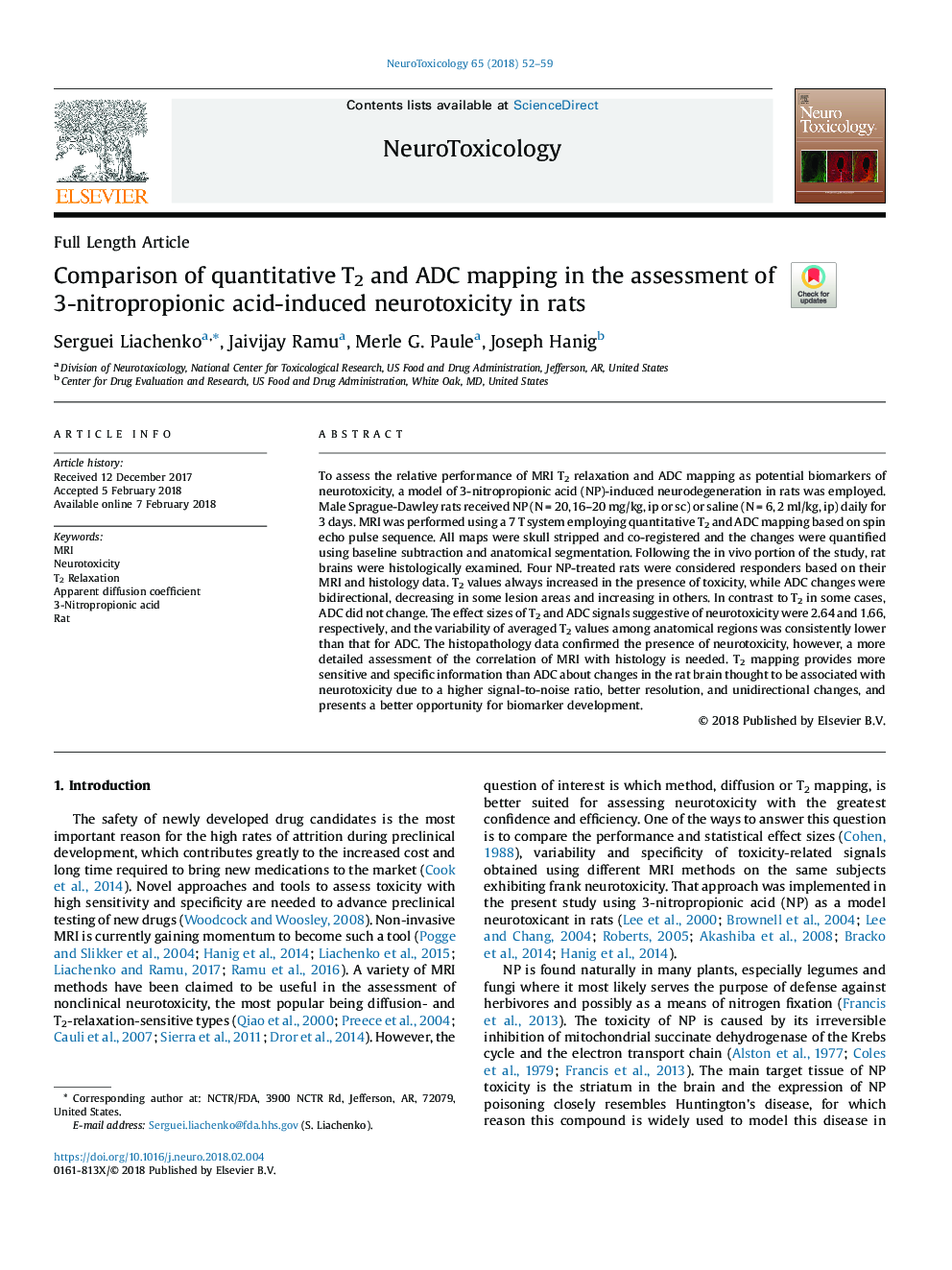| Article ID | Journal | Published Year | Pages | File Type |
|---|---|---|---|---|
| 8550196 | NeuroToxicology | 2018 | 8 Pages |
Abstract
To assess the relative performance of MRI T2 relaxation and ADC mapping as potential biomarkers of neurotoxicity, a model of 3-nitropropionic acid (NP)-induced neurodegeneration in rats was employed. Male Sprague-Dawley rats received NP (Nâ¯=â¯20, 16-20â¯mg/kg, ip or sc) or saline (Nâ¯=â¯6, 2â¯ml/kg, ip) daily for 3 days. MRI was performed using a 7â¯T system employing quantitative T2 and ADC mapping based on spin echo pulse sequence. All maps were skull stripped and co-registered and the changes were quantified using baseline subtraction and anatomical segmentation. Following the in vivo portion of the study, rat brains were histologically examined. Four NP-treated rats were considered responders based on their MRI and histology data. T2 values always increased in the presence of toxicity, while ADC changes were bidirectional, decreasing in some lesion areas and increasing in others. In contrast to T2 in some cases, ADC did not change. The effect sizes of T2 and ADC signals suggestive of neurotoxicity were 2.64 and 1.66, respectively, and the variability of averaged T2 values among anatomical regions was consistently lower than that for ADC. The histopathology data confirmed the presence of neurotoxicity, however, a more detailed assessment of the correlation of MRI with histology is needed. T2 mapping provides more sensitive and specific information than ADC about changes in the rat brain thought to be associated with neurotoxicity due to a higher signal-to-noise ratio, better resolution, and unidirectional changes, and presents a better opportunity for biomarker development.
Related Topics
Life Sciences
Environmental Science
Health, Toxicology and Mutagenesis
Authors
Serguei Liachenko, Jaivijay Ramu, Merle G. Paule, Joseph Hanig,
